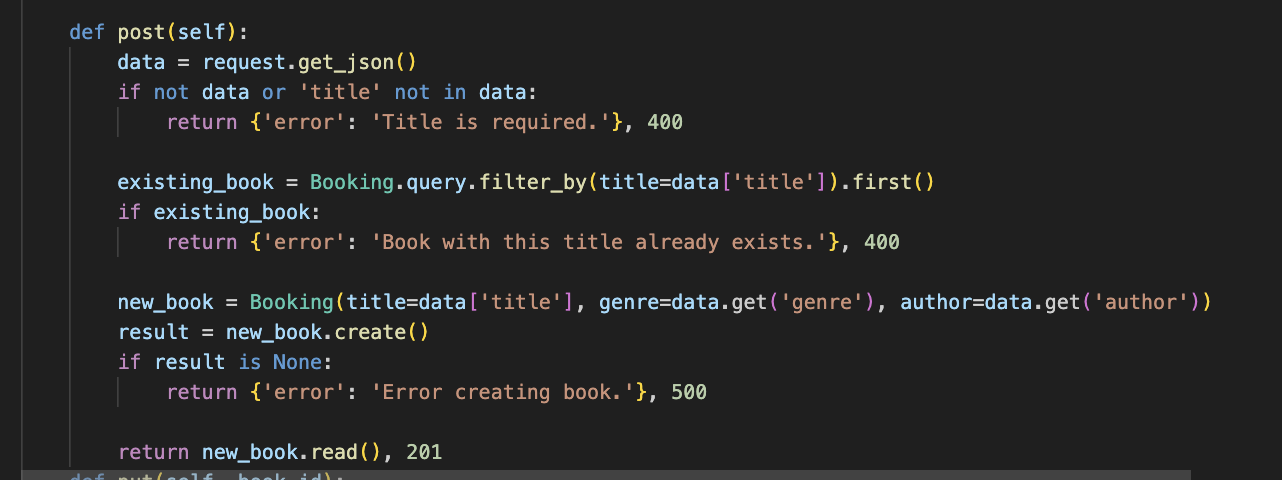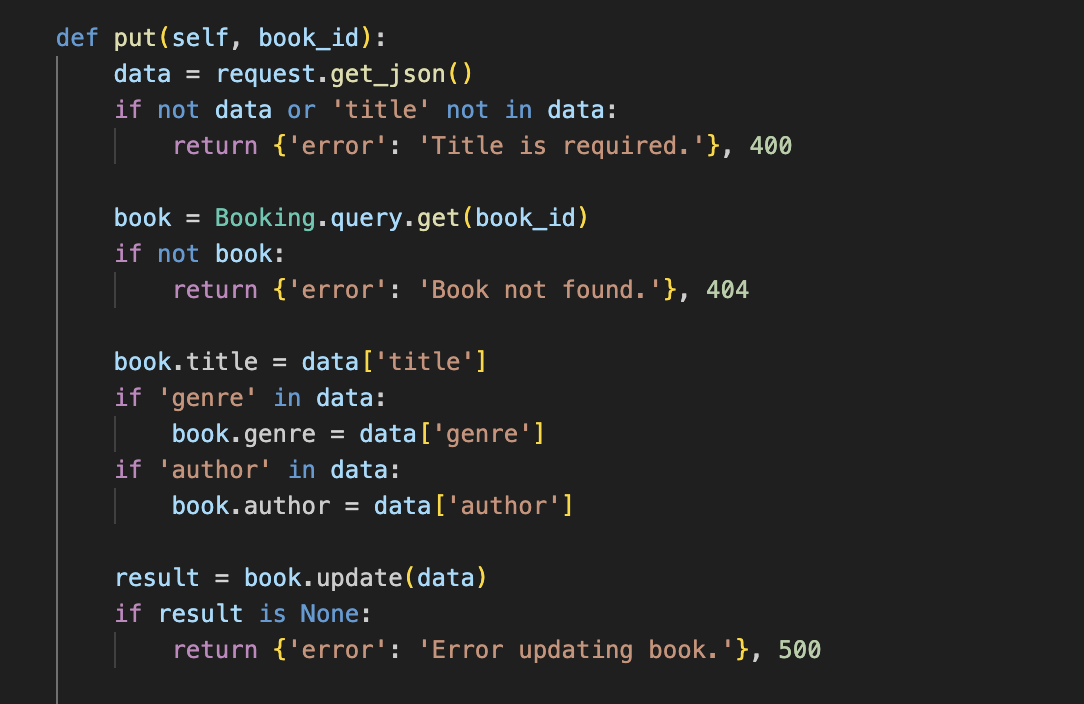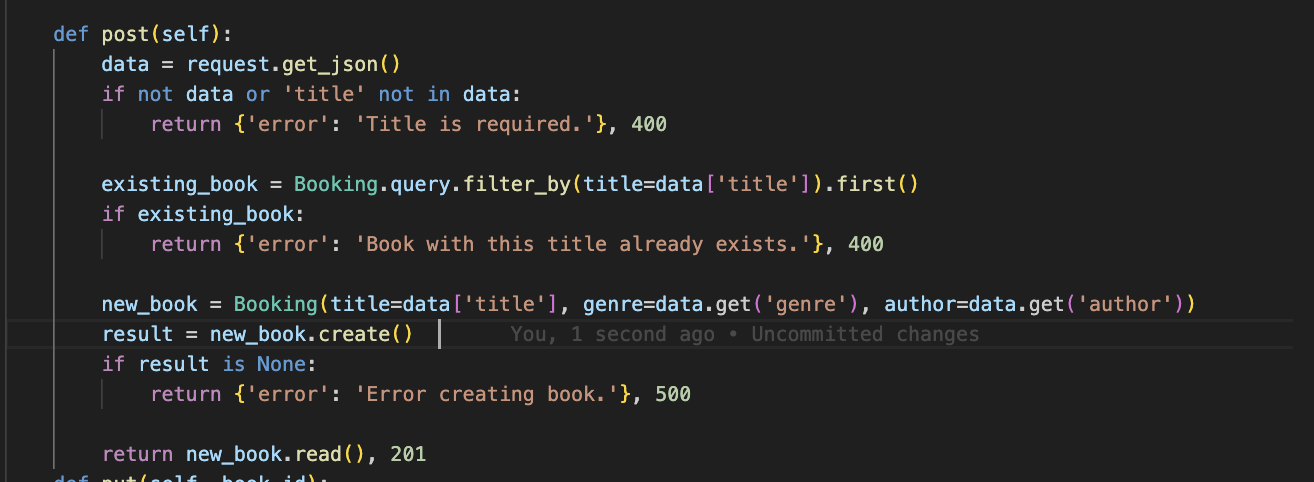User Inputs
 When update book button is hit it gives a prompt for the user to input data which when submited updates the data on the page and in the database
When update book button is hit it gives a prompt for the user to input data which when submited updates the data on the page and in the database
Lists/Data Collection
 When the page is loaded data from the database is fetched and posted on the site. This could post anybook athor and genre combination. Ex: Harry Potter, Jk Rowling, Fantasy
When the page is loaded data from the database is fetched and posted on the site. This could post anybook athor and genre combination. Ex: Harry Potter, Jk Rowling, Fantasy
Error Handling

- Uses Differnt types of error handling to indentify errors if any
Back-End CRUD Operations

-
The process of problem-solving (Line 1 - Line 10): The code clearly outlines how the system addresses the problem of updating a book’s information. It ensures that the right data is collected, validated, and processed.
-
Interaction with the database (Line 4, Line 7 - Line 9): The code demonstrates how data is fetched from and updated in a database.
-
Managing and manipulating data (Line 2, Line 3, Line 5): The code uses input validation and error handling to manage and ensure the integrity of the data being processed.
-
Abstraction and algorithm design (Line 10): The use of the update() method encapsulates complexity and provides a simple interface for updating a book record.
-
Error handling and feedback (Line 2, Line 3, Line 5): The function provides clear feedback to users, which is crucial for usability and debugging.

-
The process of problem-solving (Line 1 - Line 10): The code demonstrates problem-solving by first validating the input, checking for duplicate entries, creating a new record, and then handling errors appropriately. This follows a logical sequence of Lines for handling a book creation request.
- Interaction with the database (Line 4, Line 7 - Line 8): The code interacts with a database using ORM methods like filter_by() and create(). These methods are essential for managing and manipulating data in the backend.
-
Managing and manipulating data (Line 2, Line 5, Line 6): The function checks and validates the input data, ensuring that the title is present and that no duplicate books are created.
-
Abstraction and algorithm design (Line 7, Line 8): The create() and read() methods abstract the database logic, providing a cleaner and more maintainable approach to saving and retrieving the book’s data. Error handling and feedback (Line 2, Line 5, Line 9): The code handles different error scenarios with appropriate feedback (e.g., returning error messages for missing title or existing book), which improves the user experience and makes debugging easier.
- Input/output processing and validation (Line 2, Line 3, Line 10): The code processes the input (ensuring required fields are present) and returns output (the created book or error message). Proper validation is performed to ensure data integrity.